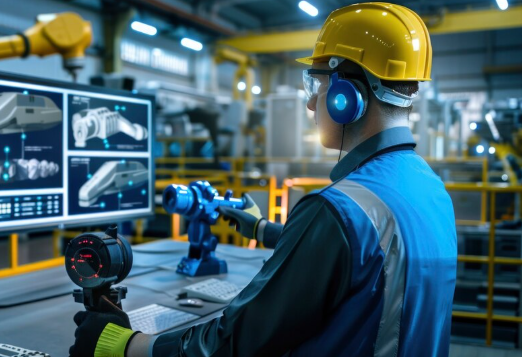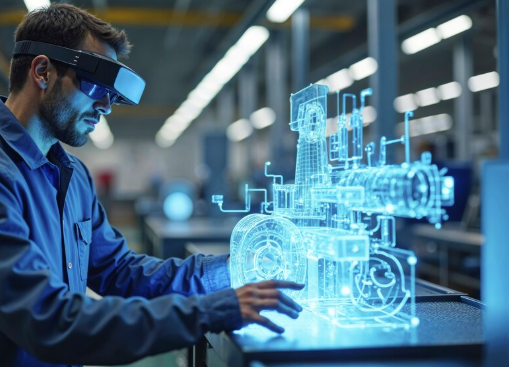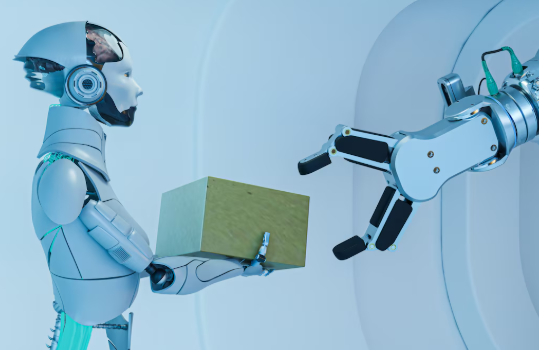Global trade and logistics have long contended with limited visibility, complex transit routes, and delivery delays. Now, AI innovation is reshaping every stage of container tracking—from predictive routing to real-time exception detection. When integrated with smart IoT, cloud computing, and generative analytics, AI-driven logistics transforms operations into seamless, adaptive networks. This is not just incremental improvement—it’s digital transformation powered by enterprise-grade IT solutions and intelligent automation. Partners like STL Digital help businesses integrate AI into logistics seamlessly.
-
AI Enhances Visibility and Predictability in Transit
Traditional container tracking relies on static GPS updates and manual input. According to Gartner, logistics platforms are evolving into AI-enhanced systems capable of predicting ETAs, anomaly detection, and real-time tracking across carriers and ports using integrated data sources. This capability aligns with Gartner’s forecast of actionable AI use cases, like Maritime AI predicting delays and reasons for disruption.
These predictive insights allow logistics leaders to proactively reroute shipments, notify stakeholders of delays, and manage exceptions in real time—all vital components of modern cloud-based IT solutions and services.
- Operational Efficiency through AI-driven Logistics Automation
McKinsey highlights that AI-powered solutions in supply chain and logistics have enabled early adopters to achieve up to 15% cost reduction in logistics operations, 35% reduction in inventory levels, and 65% improvement in service levels compared to competitors. In a separate study, McKinsey also found that embedding AI into distribution operations—including container tracking—can significantly improve warehouse efficiency, demand forecasting accuracy, and order fulfillment rates.
By embedding AI application in business, logistics providers are adopting AI-based demand forecasting, dynamic routing, and digital twin modeling to optimize container movements and reduce idle time.
- Real-Time Container Tracking via AI-infused Control Towers
Next-generation logistics control towers integrate AI with IoT, carrier APIs, and telematics to provide a continuous real-time experience:
- AI analyzes sensor feeds to identify route deviations, temperature excursions, or unexpected dwell times.
- Visual dashboards leverage generative summaries to offer actionable recommendations.
- Task automation triggers alerts or migration workflows when exceptions occur.
These capabilities boost resilience, transparency, and agility—anchoring IT solutions that support smarter decision-making.
- Use Cases Where AI Innovation Transforms Container Logistics
4.1 Predictive ETA and Delay Notifications
AI models analyze historical transit data, weather, port congestion, and carrier performance to predict arrival windows. When delays arise, stakeholders receive proactive notifications—avoiding disruption and increasing responsiveness.
4.2 Smart Exception Handling
Generative AI agents summarize deviations with risk assessments and suggest corrective actions—such as rerouting or rebooking—powered by real-time status and a repository of past issue resolution.
4.3 Autonomous Document Generation
AI systems automatically create shipping manifests, customs documents, and compliance data by analyzing sensor and transaction trails—reducing manual workload and error rates.
- Value Realization: Beyond Tracking
| Feature | Business Impact |
| Predictive Analytics | Minimized dwell time and improved ETA accuracy |
| Exception Intelligence | Reduced manual escalation and faster resolution |
| Document Automation | Eliminated errors, cut workload 10–20% |
| Cross-System Integration | Unified visibility across transportation, inventory, and finance systems |
- Aligning with Broader Digital Transformation Strategies
Container tracking is often segregated as a standalone logistics function. But AI’s broader role in enterprise applications and AI application in business enables this capability to become part of end-to-end digital workflows:
- Freight costs tie directly back to financial systems for margin analytics.
- Inventory decisions leverage container status for precise planning.
- Generative dashboards feed executive decision loops in logistics and operations.
AI-powered container tracking is thus not a niche function—it is a core capability within a holistic digital transformation initiative supported by agile IT solutions.
AI as the Central Enabler
AI is revolutionizing container tracking and logistics by enabling real‑time visibility, predictive intelligence, and smarter operations. Organizations that incorporate AI innovation into their tracking frameworks, infrastructure, and workflows enable transformative change—unifying container insights with broader processes via enterprise IT solutions and generative intelligence. By partnering with STL Digital, business can streamline logistics at various levels through integration of Artificial Intelligence.
For enterprise leaders, the path forward is clear: embed AI-driven tracking into logistics control towers, align capabilities with AI application in business, and advance toward full digital transformation. When AI powers both insight and action, container logistics becomes not just operational, but strategic.



